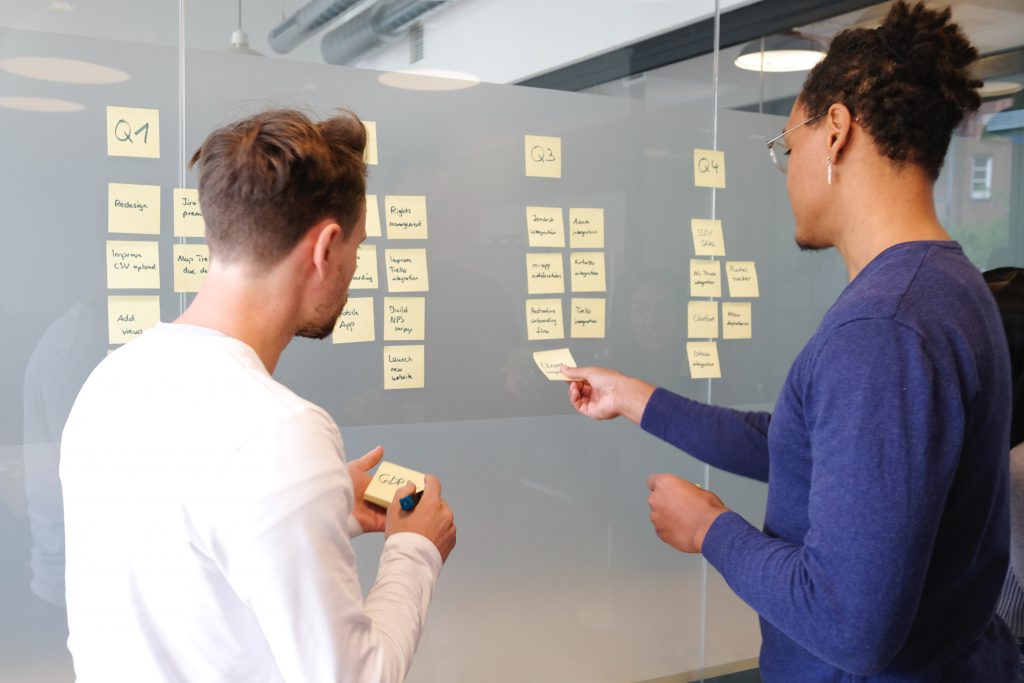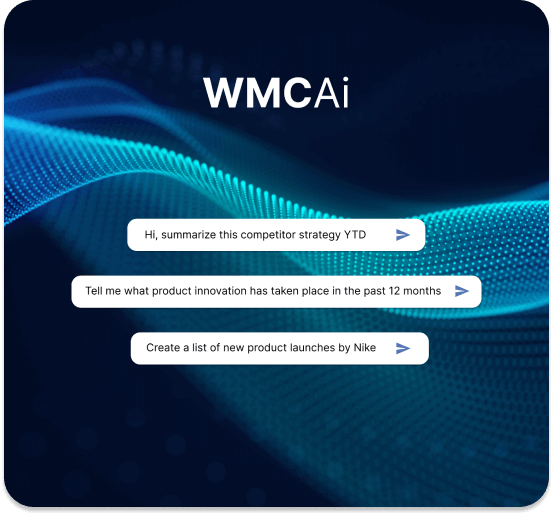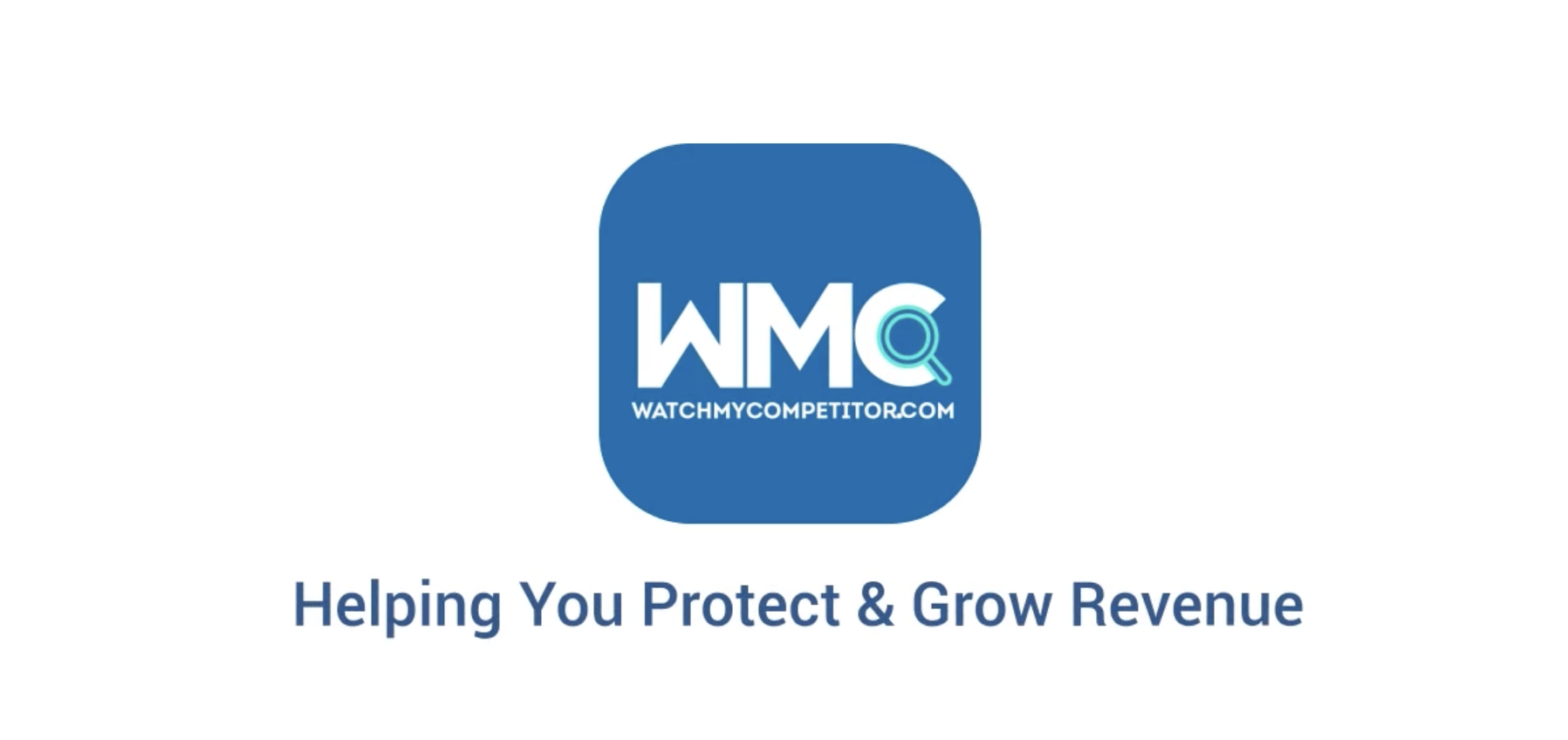Overview
- Introduction
- Unleashing agile in your product roadmap
- Agile principles & competitive intelligence
- Strategic frameworks for agile integration
- Agile & competitive intelligence: A winning duo
- The synergy between agile & competitive Intelligence
- Implementation & best practices
- Measuring agile excellence
Introduction
The days of utilising a rigid, unyielding product roadmap are over. In the past, these static plans served as the blueprint for successful product development, with every step meticulously planned out in advance.
However, in today’s constantly evolving digital landscape, clinging to such outdated strategies is not just ineffective — it’s a recipe for failure. Rigid product roadmaps that are based on fixed plans and long-term schedules are inflexible and prone to becoming quickly outdated or irrelevant.
A recent study found that 70% of product development professionals believe the cycle time of their product development projects are too long to be effective.
In an era defined by rapid technological advancements, ever-shifting consumer preferences, and fierce market competition, businesses must rethink their product development strategies.
To succeed in this dynamic environment, you need to remain agile and maintain a vigilant awareness of your competitors’ actions and activities.

Failure to do so can lead to severe problems when creating and launching your product, such as the following:
Wasting resources and time on features or goals that are no longer valuable or feasible; losing alignment with stakeholders’ expectations and requirements for the product delivery; or compromising product quality and performance for predefined schedules and deadlines.
This article will provide you with a clear understanding of how an agile product roadmap combined with competitive intelligence can help you avoid these pitfalls and achieve product success.
You’ll learn how to create an effective product roadmap that is fully-responsive to the changing needs and preferences of your customers — and resilient against the actions and strategies of your competitors.
We will also provide you with a step-by-step guide on how to implement agile methodologies into your product roadmap. And show you how to measure the effectiveness of agile integration with data-driven key performance indicators (KPIs) and metrics.
Unleashing Agile In Your Product Roadmap
Agility can be applied to any type of project, but it is especially suited for product development where customer feedback and adaptability is crucial.
Agile is not just a methodology — it’s a mindset and culture that encourages iterative progress, cross-functional collaboration, and an unwavering commitment to customer satisfaction.
By creating an agile product roadmap and breaking down product development into smaller, manageable increments that deliver value at each step, it empowers you to respond swiftly to market shifts and evolving customer needs.
Agile promotes flexibility, efficiency, and the ability to pivot when necessary, ensuring that your product roadmap remains in sync with development requirements and customer expectations.
An agile product roadmap can affect many aspects of your product development cycle, which include:
- How you plan and prioritise your product features and goals;
- How you design and test your product solutions and prototypes;
- How you collaborate and communicate with product development teams and stakeholders;
- How you deliver and launch your product to your customers;
- How you measure and improve your product performance and quality
In essence, an agile product roadmap can help you to create a product that is more valuable, usable, and reliable for your customers — by allowing you to be more adaptable, efficient and innovative during your product development stages.

Agile Principles & Competitive Intelligence
Agile is founded on a set of values and principles that support its successful use in product development and management. These principles not only enhance adaptability, collaboration and customer focus; they also pave the way for swift and insightful decision-making.
Additionally, when you integrate competitive intelligence with agile principles, it makes your approach to product development even more effective. This is because competitive intelligence provides you with invaluable insights and real-time data to help you make impactful strategic decisions.
The fundamental principles of agile and the ways in which competitive intelligence supports them include:
1) Adaptability & responsiveness
A core principle of agile is to embrace change and respond to it effectively. Competitive intelligence supports this principle by providing timely and relevant information that allows you to adjust your product development strategy accordingly.
By utilising competitive intelligence, you can effectively monitor the market and the competition to identify any crucial changes that may affect the success of your product.
2) Customer-centricity
Agile principles emphasise a relentless commitment to customer satisfaction. Competitive intelligence complements this principle by providing real-time insights into customer preferences, behaviours, and emerging market trends.
These valuable data points allow you to maintain a laser-sharp focus on delivering value to customers, by adapting your product development to their evolving needs and demands.
3) Collaboration & cross-functional teams
Agile thrives on collaboration, breaking down silos and cultivating an environment where cross-functional teams can work in unison.
Competitive intelligence is the connective tissue that binds your product development and management teams together, as it provides a common understanding of market dynamics and the competitive landscape.
Teams armed with competitive intelligence can collectively analyse the market, identify potential threats, and strategise together to effectively meet product objectives.
4) Iterative development
Agile’s iterative approach follows a principle of delivering frequent increments of value and reacting based on constant feedback loops. Competitive intelligence contributes to this process by delivering real-time information about competitor actions and market shifts.
This equips your product development team with the ability to seize opportunities as they arise and to address challenges promptly.
5) Swift decision-making
Agile’s principle of swift decision-making is a game-changer in an environment where any delay can lead to missed opportunities and losing ground to competitors.
Competitive intelligence supports this principle by providing decision-makers with the power to act strategically and decisively in a timely manner. This powerful combination of agile decision-making and real-time insights allows you to make faster and smarter decisions with confidence.

Strategic Frameworks For Agile Integration
Agile is not a one-size-fits-all solution. The agile framework that you choose to utilise will depend on several factors, such as the nature of your product, development requirements, and available resources.
Each framework offers its own set of advantages and applications, so it’s important to choose the one that best complements your product goals, business objectives, and organisation’s culture — ensuring that your product roadmap is tailored to your unique needs and circumstances.
Scrum
Scrum is perhaps the most well-known agile framework and is characterised by its iterative approach using short, fixed-length development cycles (called sprints).
This framework encourages collaboration within cross-functional teams and emphasises regular adaptations to ensure product development is consistently aligned with customer needs.
Scrum’s iterative and incremental nature is well-suited for projects where requirements are subject to frequent changes. Its focus on transparency, collaboration, and adaptation make it a robust framework for managing complex projects.
Kanban
Unlike Scrum, the Kanban framework doesn’t rely on fixed-length sprints and offers a more flow-based approach to being agile. It is characterised by visualising tasks on a Kanban board, allowing teams to manage, prioritise, and optimise work in progress.
This framework excels at maintaining a flexible yet smooth and steady workflow, ensuring teams can respond to changing priorities and requirements in a highly adaptable manner.
The Kanban framework is a great choice when you need to manage a high volume of tasks with varying priorities and sizes.
Lean
Lean is an agile framework that is built on the principles of efficiency and value delivery. It centres on optimising product development processes to minimise waste and enhance customer focus.
The Lean framework is especially valuable for organisations seeking to reduce lead times and streamline their product development, by identifying and eliminating non-value-adding activities.
Lean can be extremely beneficial when you have a limited budget or resources and you want to deliver the most value to your customers with minimal investment.
eXtreme Programming (XP)
XP is an agile framework that puts a strong emphasis on engineering practices, collaboration, and responsiveness to changing requirements. The XP framework ensures the creation of high-quality products by embracing practices like test-driven development, pair programming, and regular customer involvement.
These practices ultimately contribute to faster delivery, improved product reliability, and adaptability to evolving project needs.
eXtreme Programming (XP) is an excellent choice for projects where the technical performance of a product is critical and ongoing customer involvement is essential.

Agile & Competitive Intelligence: A Winning Duo
The fusion of agile methodologies and competitive intelligence creates a synergy that is unparalleled in its ability to drive success for your product development and product management strategies.
It’s an effective combination that equips you with the tools and knowledge needed to not only keep pace with change, but to also lead the charge.
Incorporating agile methodologies and competitive intelligence into your product roadmap will enhance your ability to respond effectively to changes in the market — enabling you to make swift and accurate data-driven decisions.
The Synergy Between Agile & Competitive Intelligence
A) Real-time data as a competitive edge
Being agile in your product development relies on up-to-date information and data. Real-time data, harnessed through competitive intelligence, empowers your product development team to make informed decisions based on what is currently happening in the market.
By monitoring and evaluating competitors’ activities, market shifts, and emerging trends, you gain a competitive edge that allows you to act promptly and capitalise on potential opportunities.
B) Optimising strategic decisions
When it comes to effective product development, strategic decisions can’t afford to be based on guesswork or assumptions.
Identifying untapped niches, evaluating the effects of competitors’ innovations, and comprehending market sentiment are essential activities for delivering a product that meets customers’ needs.
Competitive intelligence provides invaluable insights that enable you to make informed decisions, optimise your strategies, and keep ahead of shifting market dynamics.
C) Enhanced adaptability
Having the ability to adapt quickly is one of the most important attributes of being agile. Competitive intelligence serves as a guiding compass, ensuring that your adaptations are a precise pivot informed by market realities.
This allows you to respond rapidly to competitive threats, capitalise on market opportunities, and fine-tune product development to align perfectly with customer expectations.
D) Improved customer satisfaction
Utilising competitive intelligence isn’t just about adapting to competitors; it’s also about staying in sync with customers’ expectations. Insights gained through competitive intelligence play a vital role in determining customer behaviour, preferences, and current demands.
These insights help you to understand what your customers value and expect from your products, and how you can meet or exceed their expectations.
Implementation & Best Practices
Implementing agile in your product roadmap is a transformative process that requires careful planning and execution. Adopting agile methodologies for your product development process also involves changing the way your team works and thinks.
Here are some general guidelines to abide by and steps you should take:
1) Start with a clear vision
Define your product’s objectives, target audience, and the value it aims to deliver. A well-defined vision sets the stage for a focused and customer-centric implementation of agile principles into your roadmap. Ensure that your entire team shares this vision to align their efforts.
2) Embrace change
Agile is all about adaptability. Be prepared to revise your roadmap frequently based on customer feedback, market trends, and the current state of the competitive landscape. Remember, an agile roadmap is a strategic plan that has the ability to evolve over time, it is not a fixed contract.
3) Leverage competitive intelligence:
Use competitive intelligence to inform your product roadmap. Understand your competitors’ strategies, offerings, and customer feedback to guide your own feature prioritisation and strategic decision making.
4) Prioritise features
Not all features are created equal. Use your product vision, customer feedback, and competitive intelligence to prioritise features that deliver the most value. Consider using a framework like MoSCoW (Must have, Should have, Could have, Won’t have) to help with the prioritisation of features and immediate tasks.
5) Foster Collaboration
Encourage open communication between all stakeholders, including product managers, development teams, and customers. Regularly review and update your product roadmap together to share insights and ensure alignment. Make necessary adjustments that reflect evolving customer needs, product requirements, and current market conditions.
6) Think in iterations
Break down your roadmap into manageable chunks or iterations which are short, time-bound periods dedicated to focused work (sprints). Prioritise tasks based on customer value and create a backlog of items to be addressed. This process ensures the most important tasks are handled first.
7) Measure & monitor
Utilise key performance indicators (KPIs) and metrics to assess the impact of your agile implementation. Regularly monitor your product development processes and outcomes to identify specific areas that need attention or improvement.
8) Promote a learning culture
Being agile is as much about mindset as it is about methodology. Foster a culture in your organisation that values learning, experimentation, and continuous improvement.

Measuring Agile Excellence
When incorporating agile methodologies into your product roadmap, it’s essential to have a clear system for gauging the effectiveness and impact it has on your product’s success.
It’s also important to choose KPIs and metrics that relate specifically to your overarching business goals — as what matters most can vary from one company to another.
Use the following indicators to help guide your efforts to ensure agile practices are effectively delivering value to your organisation, products, and customers.
A) Cycle time & lead time
By keeping track of how swiftly work progresses from start to finish, you can evaluate the speed and efficiency of your agile integration.
B) Velocity
By consistently measuring the amount of work a team can complete during a specific time period, you gain a clear picture of your product development’s pace. This serves as a valid indicator for the successful implementation of agile practices into your workflow.
C) Customer satisfaction
Regular collection and evaluation of customer feedback is a reliable measurement of how well agile practices are aligning with customer needs.
D) Defect rate
By keeping an eye on the defect rate, you can determine if agile practices are enhancing product quality and helping you deliver superior value to your customers.
E) Frequency of releases
Observing the regularity of feature releases can indicate how well your agile practices enable you to swiftly respond to customer demands and market changes.
F) Internal Stakeholder Feedback
Proactively seeking feedback from internal stakeholders helps you determine if your agile practices are effective in addressing organisational needs and requirements.
Concluding Thoughts
Market trends shift at a breakneck speed, customer preferences change overnight and technological advancements occur in the blink of an eye.
Product roadmaps need to be agile, flexible, and well-informed to ensure you have the ability to respond to these types of changes effectively.
In the rapidly changing world of product development, agile methodologies and competitive intelligence are now essential components for delivering a product that remains relevant and competitive in the market.
Competitive intelligence provides invaluable insights into the current state of the market, while agile methodologies allow for flexibility and quick adaptation to changing market trends.
Together, this powerful combination forms a robust strategy and winning formula for achieving optimal product outcomes in today’s dynamic business environment.








